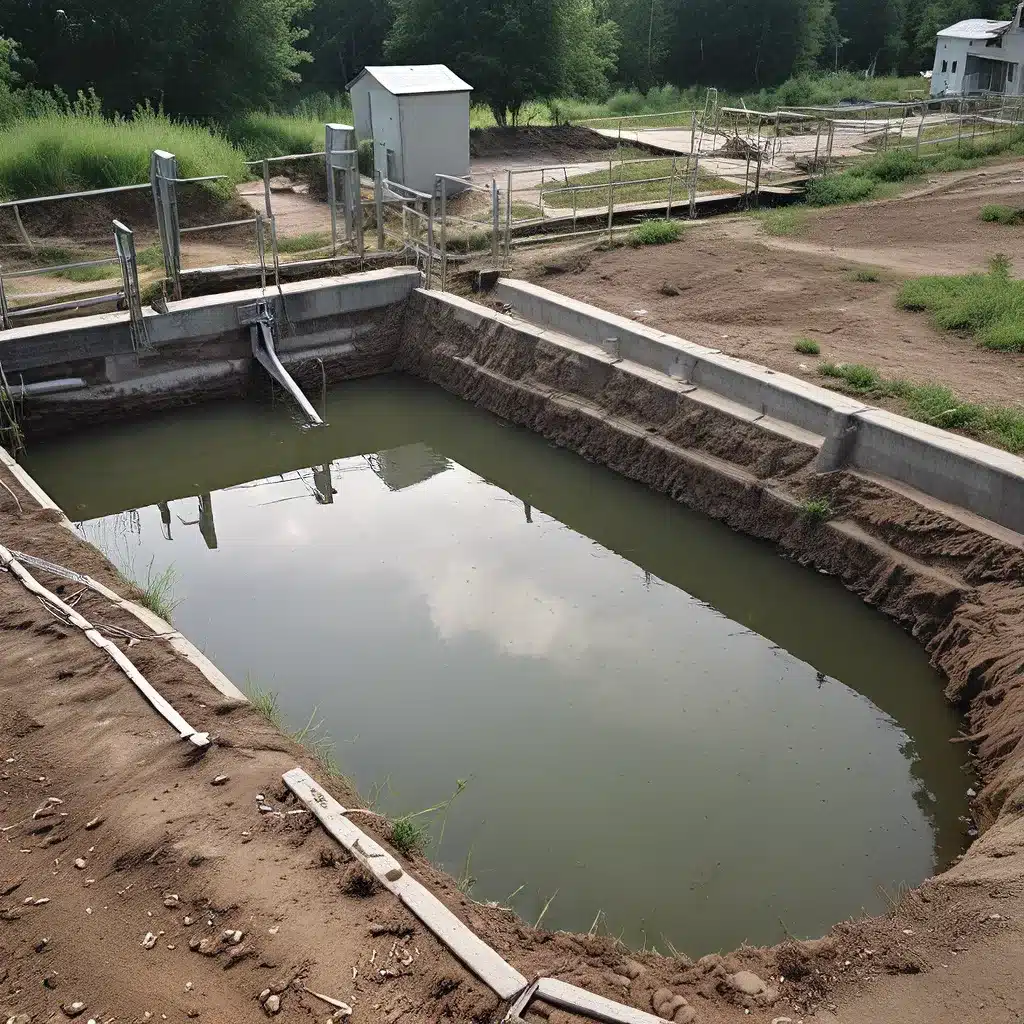
The Untapped Treasure in Our Sewers
You know, I’ve always been fascinated by the hidden wonders that lurk beneath our streets. No, I’m not talking about the usual suspects – the lost socks, spare change, and other random bits and bobs. I’m talking about something much more intriguing… the treasure trove of public health data that’s just waiting to be unlocked from our wastewater systems.
It might sound a bit odd at first, but hear me out. See, our sewers aren’t just a conduit for flushed toilets and kitchen sink runoff – they’re actually a rich tapestry of clues about the health and habits of the communities they serve. And this wastewater-based epidemiology (or WBE, as the cool kids call it) is quickly becoming one of the most powerful tools in the public health toolbox.
The CDC’s National Wastewater Surveillance System (NWSS) is a prime example of how this approach is revolutionizing the way we monitor the spread of diseases like COVID-19. By tracking the presence of viral genetic material in wastewater samples, they can get an early warning sign of outbreaks – sometimes days or even weeks before traditional clinical data starts rolling in. And it’s not just COVID-19 – WBE has also been used to keep tabs on everything from polio to illicit drug use.
A Crystal Ball for Public Health
But the real beauty of WBE is that it’s not just limited to infectious diseases. Nope, this sewer-based sleuthing can actually give us a remarkably comprehensive snapshot of a community’s overall health and wellbeing. Think about it – our wastewater is essentially a concentrated sample of, well, everything that goes into and out of our bodies. From pharmaceutical residues and personal care products to dietary markers and signs of environmental exposures, it’s all in there.
So, by applying advanced analytical techniques to wastewater, we can get a sense of things like:
* Trends in drug and alcohol use: Tracking the levels of metabolites from substances like cocaine, opioids, and nicotine can give us a real-time pulse on population-level consumption patterns.
* Nutritional status: Biomarkers for things like vitamins, minerals, and dietary fats can reveal insights about the nutritional health of a community.
* Exposure to environmental contaminants: The presence of chemicals like pesticides, plasticizers, and heavy metals can help us identify areas with heightened environmental exposures.
* Prevalence of certain diseases: Detecting genetic signatures of pathogens or disease-specific biomarkers can provide an early warning of outbreaks or chronic health issues.
It’s like having a crystal ball for public health – one that’s constantly updated with fresh data, and can spot emerging trends and risks before they become full-blown crises. And the best part? This intel comes at a fraction of the cost of traditional epidemiological surveillance methods.
Navigating the Challenges of WBE
Of course, as with any powerful tool, there are challenges that come with implementing wastewater-based epidemiology. For starters, there’s the whole issue of sample collection and analysis. Getting a truly representative sample from a complex sewage system is no easy feat, and then you’ve got to make sure the lab work is up to snuff. As the experts point out, the speed of this whole pipeline is crucial – the faster you can get results, the more effectively you can respond to emerging public health threats.
And then there’s the whole matter of interpreting the data. Just because you find traces of a particular substance or pathogen in the wastewater doesn’t necessarily mean you’ve got a full-blown outbreak on your hands. There are all sorts of factors to consider, from the stability of the target compounds in the sewer environment to the actual relationship between wastewater concentrations and real-world disease prevalence.
But you know what they say – where there’s a will, there’s a way. And the incredible advancements we’ve seen in areas like automated sampling, advanced analytics, and data integration are really helping to push the boundaries of what’s possible with wastewater-based epidemiology.
The Future of Wastewater Surveillance
Looking ahead, I can only imagine how this field is going to continue evolving. Experts are already talking about the potential for an “End-to-End” WBE system that can deliver near-real-time insights, complete with in-field automation and seamless data communication. Imagine a world where we can get a hyper-local, hyper-current snapshot of a community’s overall health and wellbeing, all from the comfort of our sewers.
And it’s not just about infectious diseases or substance abuse – the possibilities are truly endless. Wastewater surveillance could help us track the spread of antimicrobial resistance, monitor environmental exposures, and even get a better handle on global nutrition and diet trends. It’s a one-stop-shop for population-level epidemiology, and it’s just waiting to be tapped into.
Of course, as with any rapidly evolving field, there are still plenty of kinks to work out. We’ll need to address things like data harmonization, ethical considerations, and the integration of wastewater surveillance with other public health data streams. But I’m confident that, with the right collaborations and a little bit of scientific elbow grease, we can turn our sewers into a powerful ally in the fight for healthier communities.
So, the next time you flush, just remember – you’re not just sending your, uh, business down the drain. You’re contributing to a data-driven revolution that could change the way we think about public health. Pretty cool, right? I, for one, can’t wait to see what other hidden treasures our wastewater has in store.


